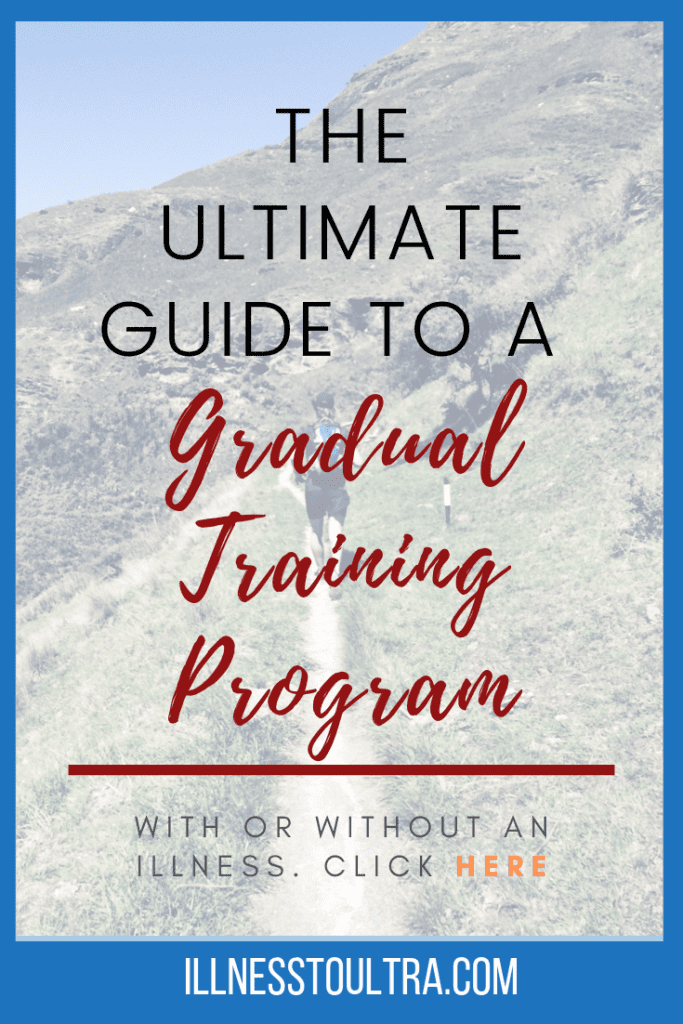Now, if you’re like me and returning from an illness, be it an autoimmune issue or any chronic inflammation, it’s essential to focus on gradually increasing your training (through pacing and distance) ensuring that you do not overdo it at any point.
If you’ve not read my post on Heart Rate training and About Me, I’d suggest moving back and going through these first. The information from these posts will help you understand the basics of how gradual training plans will help you.
The Plan
The focus of the training plan is not entirely about running. The main point dictates that you have 6 active days of the week with one day of rest, which may sound like a lot, but it’s important to note the intensity of most of these days is not high.
Out of the entire week, I would say that only 1 of the days is strenuously intensive.
The plan caters towards my situation of being static most days due to the necessity of a desk job which is true for many people in this age. Therefore, taking the time out of the day to exercise is very important for physical and mental health. If your job involves physical activity, please adjust your training plan accordingly.
When schedules aren’t on your side, adjust the workouts to fit into your life. Whether this is incorporating an activity into your commute, or if you’re traveling, find new, imaginative ways of keeping yourself active.
Take note that the distances are set up for someone like me who has a strong running base. Therefore it would be advisable to scale the distances up/down based on your levels or needs.
| Monday | Tuesday | Wednesday | Thursday | Friday | Saturday | Sunday |
|---|---|---|---|---|---|---|
| BBH 4km | Strength – upper body | Threshold 5km | Strength – yoga | Active | Rest | BBL Run 9Km |
| Strength – Lower body | BBH 4km | Strength – Yoga | Intervals | Strength – Upper body | Rest | BBL Run 10Km |
| Strength – Yoga | BBH 4km | Strength – Core | Intervals | Active | Rest | BBL Run 10Km |
| BBH 3Km | Strength – upper Body | Threshold 5Km | Rest | Strength – Yoga | Rest | BBL 11km |
The table above gives you an idea of what the first four weeks of the training plan would consist of. My previous post about Heart Rate training goes in-depth about the acronyms BBH (base building high) and BBL (base building low), along with the different sessions like intervals and threshold and their indications.
Running
The training plan starts by running three times a week, which to some people may seem like too much, but it’s important to note that these are mostly easy runs.
By easy runs, I mean these runs will focus more on the simple running motion and training the body to withstand the constant pounding of the ground without overdoing it.
As you can see only one run per week is intensive. The workout can be either a threshold workout or interval workout. These types of exercises serve a purpose by building up your anaerobic threshold, building strength and therefore upping your overall pace.
The other two weekly running sessions focus more on base building. Base building helps you by enhancing your muscular and skeletal makeup, thus improving endurance. These two runs conservatively build-up throughout the 4-week training plan.
Active
Around once a week there is a block named active. Active is where you can incorporate some cross-training. Again, it’s not about having an intensive session, but just introducing another form of exercise and diversifying your workouts.
Training diversification ensures you work on and focus on the muscles and parts of your body that are underutilized during a training program for running.
My cross-training usually consists of some form of cycling, as this diversifies my training and I enjoy cycling. To further clarify, the cross-training sessions will only include a fairly gentle cycle in and around town, which will help build up leg milage but reduce the impact on joints.
Strength
Strength training is a significant part of this plan. Many runners neglect the strength, believing that getting out for an extra run will benefit them more.
Sadly, the extra pounding on your feet will more than likely result in an overuse injury.
The strength training will focus on creating mobility and stability to sustain long distances runs. To achieve overall body stability the strength routines should focus on different areas of the body, to ensure a full-body make up is accounted for and we do not neglect any part of the body.

Rest
Rest means rest. It does not mean, sit all day, but it will undoubtedly involve a reduced workload. Rest can include walks around town, but be mindful not to overexert yourself. Rest is one of the most critical parts of your training. Without rest, your body would never repair. Rest.
To fully repair your body, resting must include getting a proper night’s sleep. Sleep and a generally healthy lifestyle are so crucial to your training plan (and any life plan, really), do not burn the candle at both ends!
Stretching and more
The last thing to touch upon in this plan is stretching. I would not suggest stretching before a run, but instead to do some gentle stretching at night, especially after a running day.
Flexibility is key to staying injury-free, especially for runners! Head over to my fellow blogger’s page on flexibility to learn more. And whilst you’re there learn about another interesting cross-training possibility to fit into your plan.
Other great tools to incorporate into your stretching sessions include using foam rollers* and massage balls* to ease any painful areas. I feel this is important to ensure you keep a good range of motion and also to help you listen to your body a little more. Check out RuNation for more information on foam rolling!
Through stretching, you can feel where your body is tight which is an excellent indication of future problem areas that could potentially cause injuries. I can’t stress enough the importance of knowing injury symptoms.
The problem/painful area is more often than not the cause of any pain issues or injuries. These problems can be linked further up the chain. For instance, knee problems can be due to tightness in your hips or glutes. Many hip flexor strains are often related to poor core strength. It’s all related!
If these issues occur, I would highly advise you to consult your physio and talk through any pains or niggles you have. You can also ensure you have a proper stretching and strengthening plan with them.
If you pay attention and listen to your body, as I have learned to do, you get to know your body and warning signs so well that you will know what the issues are.

Adjusting for illness flare-ups
Please please please do not overtrain. If you feel signs of your illness coming on take note of it and modify your training plan. If you push too hard, you always risk the possibility of illness flare-ups, which will likely set you back to where you started.
I often miss workouts due to “off” days, but I do not feel guilty for it. Working with chronic illnesses can be a tricky situation, but you will learn how your body works and feels. From here you should rethink and readjust the training plan to suit.
Sadly you may not be the resilient runner you used to be, but it doesn’t mean you can’t enjoy it still and use training plans successfully.
Like this post? Pin it!

